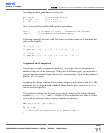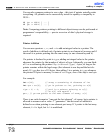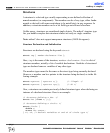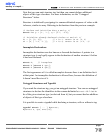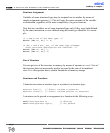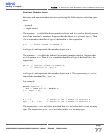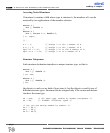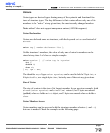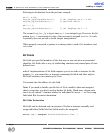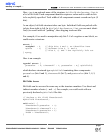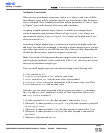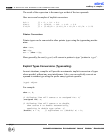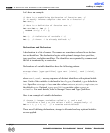
Unions
Union types are derived types sharing many of the syntactic and functional fea-
tures of structure types. The key difference is that a union allows only one of its
members to be “active” at any given time, the most recently changed member.
Note: mikroC does not support anonymous unions (ANSI divergence).
Union Declaration
Unions are declared same as structures, with the keyword
union used instead of
struct:
union
tag
{
member-declarator-list
};
Unlike structures’ members, the value of only one of union’s members can be
stored at any time. Let’s have a simple example:
union myunion {
// union tag is 'myunion'
int i;
double d;
char ch;
} mu, *pm = μ
The identifier mu, of type union myunion, can be used to hold a 2-byte int, a
4-byte double, or a single-byte char, but only one of these at any given time.
Size of Union
The size of a union is the size of its largest member. In our previous example, both
sizeof(union myunion) and sizeof(mu) return 4, but 2 bytes are unused
(padded) when
mu holds an int object, and 3 bytes are unused when mu holds a
char.
Union Member Access
Union members can be accessed with the structure member selectors (
. and ->),
but care is needed. Check the example on the following page.
MikroElektronika:
Development
tools
-
Books
-
Compilers
79
page
mikroC
- C Compiler for Microchip PIC microcontrollers
mikroC
making it simple...



